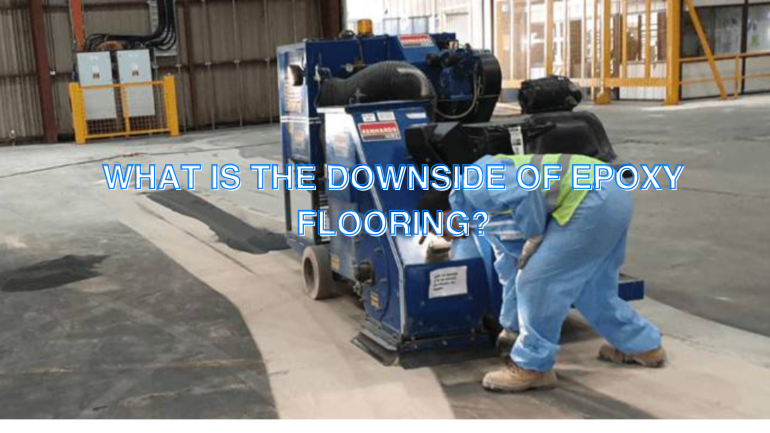Epoxy coatings have long been a popular option for covering concrete and cement floors, particularly in basements, garages, and commercial spaces. Done right, they can enhance the look, feel, and safety of these areas. However, if you’re considering traditional epoxy or polyaspartic epoxy for your home or commercial property, there are some key disadvantages you should be aware of—details that are often glossed over by salespeople. Here are five significant drawbacks to keep in mind:
1. Epoxy Floors Can Be Slippery
One of the “What is the downside of epoxy flooring?” is If your garage or basement frequently gets wet or you do projects in these areas, beware. Traditional and polyaspartic epoxy floors can become slippery when exposed to moisture, making them a safety hazard. This is especially concerning in homes with children or in businesses like restaurants or factories. To combat this, you’ll need to invest in anti-slip treatments or textured surfaces—additional costs that many salespeople might not mention upfront.
2. Toxic Fumes
During the installation and curing process, epoxy coatings can emit toxic fumes, which can cause skin irritation, nausea, headaches, and respiratory issues. It’s crucial to work in well-ventilated spaces or use protective gear. Even with low-VOC options available, the area will need to be vacant for several days during and after installation, causing disruptions to your daily life or business operations.
3. Cracks and Chips
Epoxy coatings lack flexibility, which means they’re prone to cracking and chipping if the underlying surface shifts or expands. Changes in temperature, heavy foot traffic, moisture problems, or structural issues can all lead to damage. Fixing a cracked or chipped epoxy floor is expensive and often requires a professional—another hidden cost to consider.
4. UV Damage
While epoxy floors look fantastic initially, they are highly susceptible to UV damage. When exposed to sunlight, the coating can fade or discolor over time, as UV rays break down the polymers in the epoxy. For outdoor or garage floors, this means regular maintenance with UV-resistant sealants, which translates into additional costs.
5. Time-Consuming Installation
Installing an epoxy floor is not a quick process. Prepping the area requires cleaning, testing, and thorough preparation to ensure proper adhesion. The installation itself takes time, and after it’s applied, you’ll need to wait for strict drying and curing times to avoid any issues. This can mean delays and disruptions, especially if you’re running a business.
The Clear Alternative: Epoxy Flooring Brisbane by Darius Soltani
While traditional epoxy flooring has its challenges, Epoxy Flooring Brisbane by Darius Soltani offers a superior solution. With our affordable and professional services, you won’t experience these common disadvantages. We ensure the highest quality installations, making your floors both functional and aesthetically pleasing—without the risks of slippery surfaces, toxic fumes, or UV damage. Trust us for a long-lasting and durable epoxy floor that meets your needs.
📞 Ready to upgrade your floors? Call us today at 1300 321 433 or visit our Contact Page
to request a free quote. Let our team transform your space with a flawless epoxy finish that stands the test of time.



